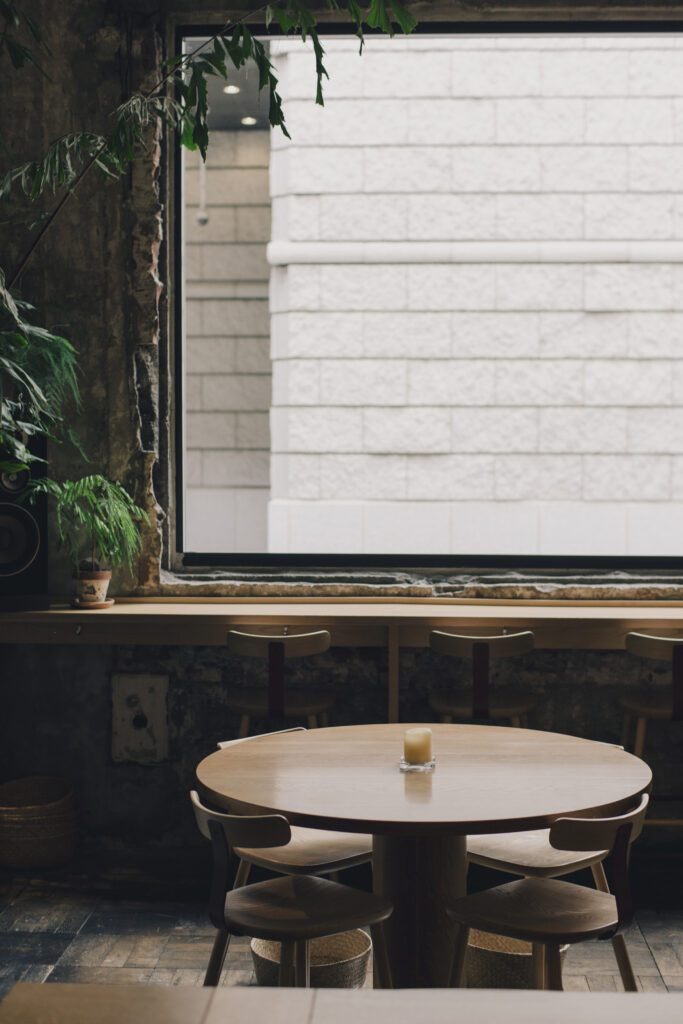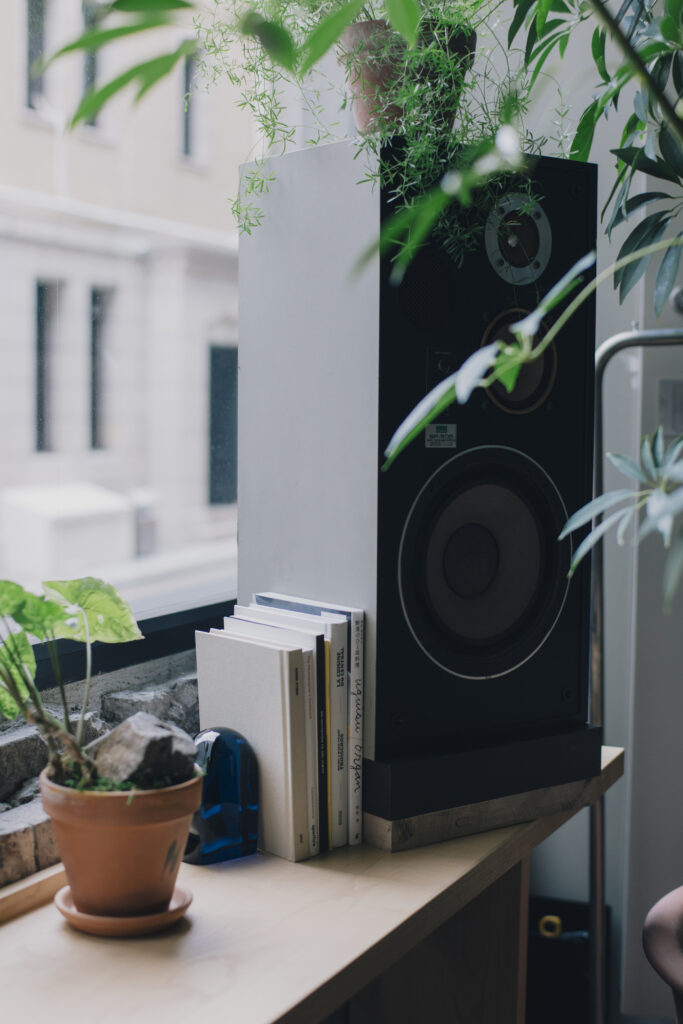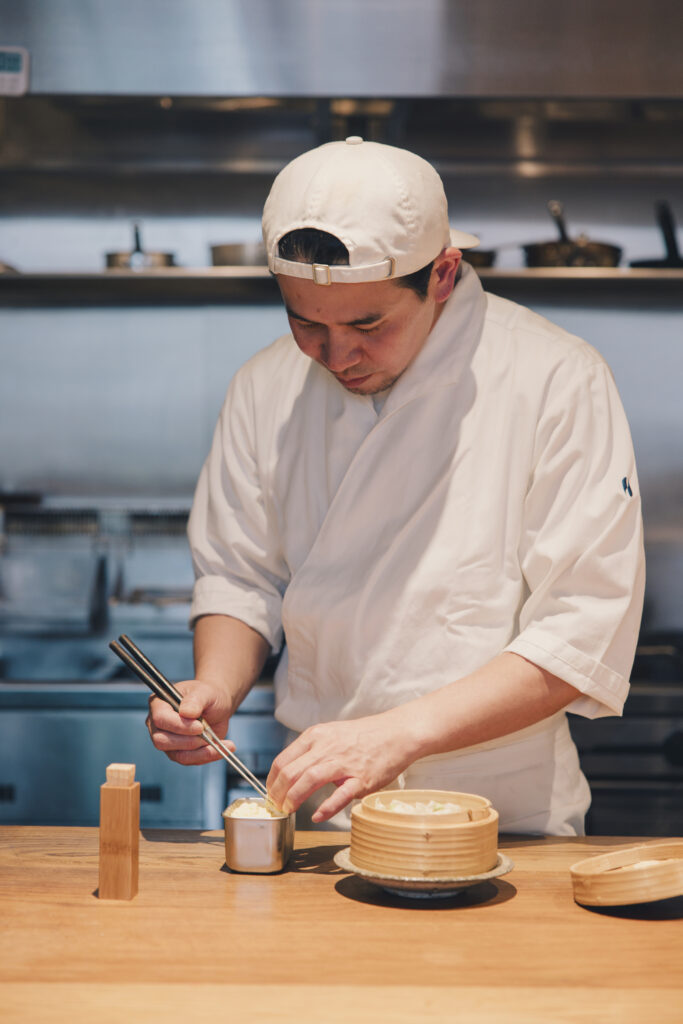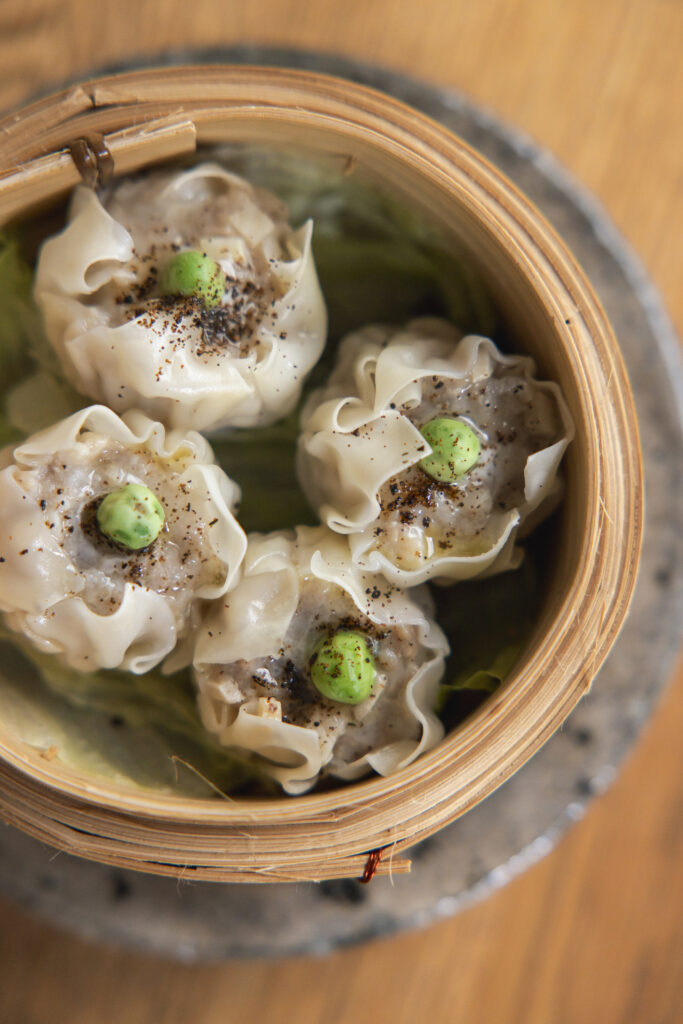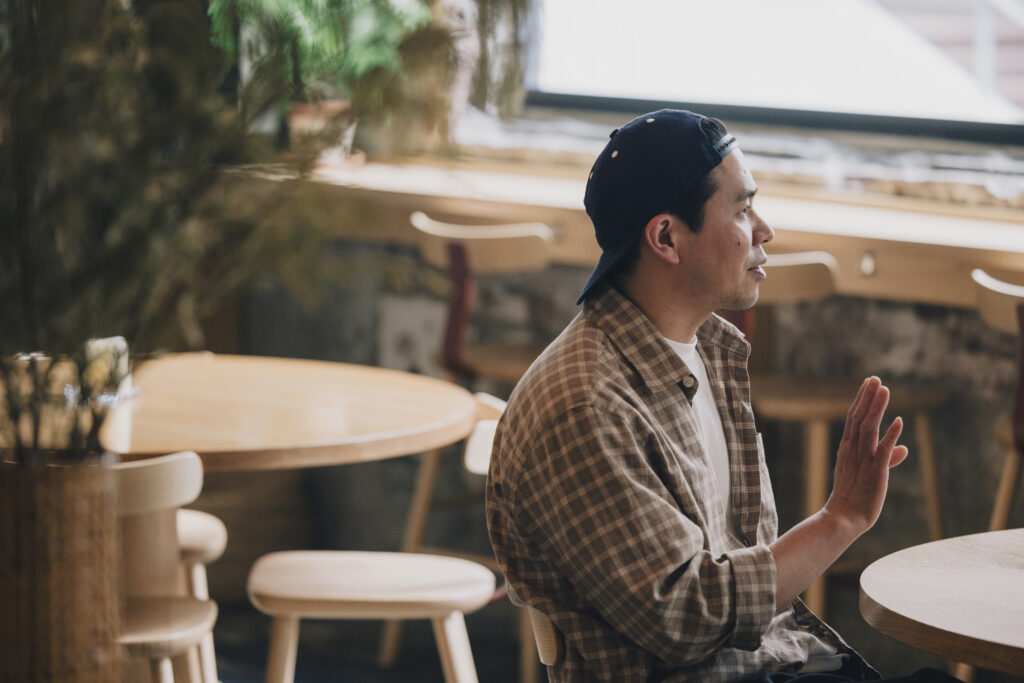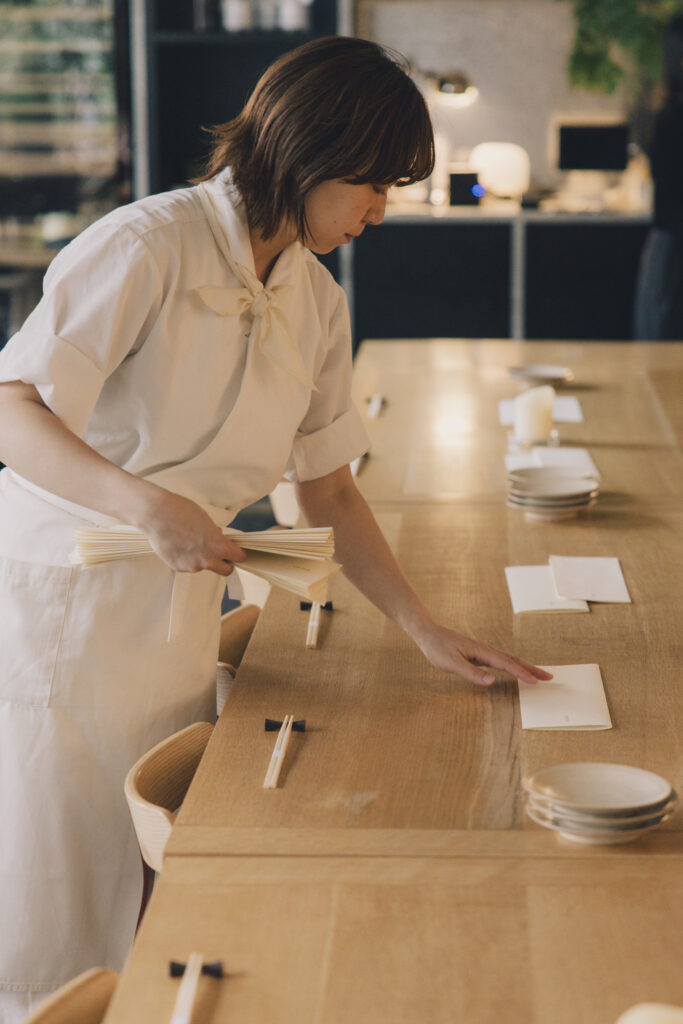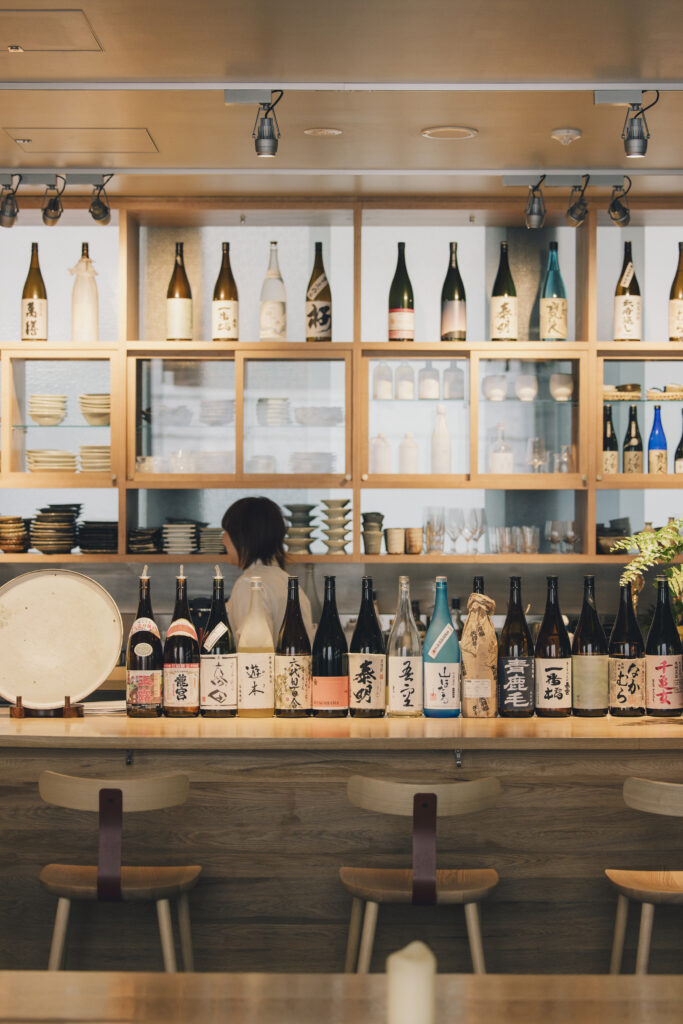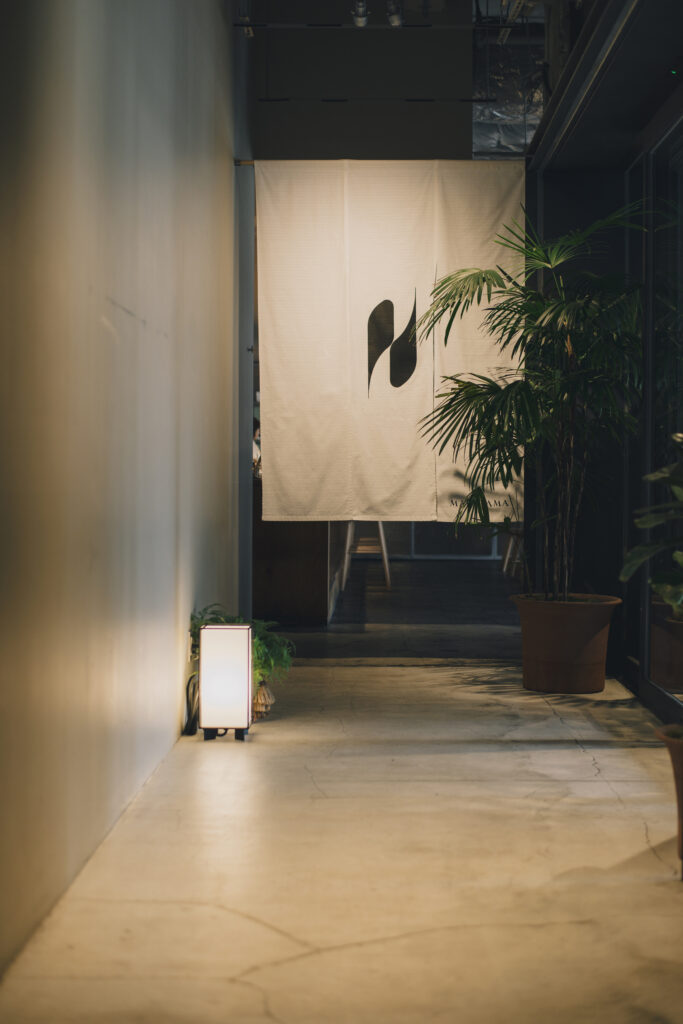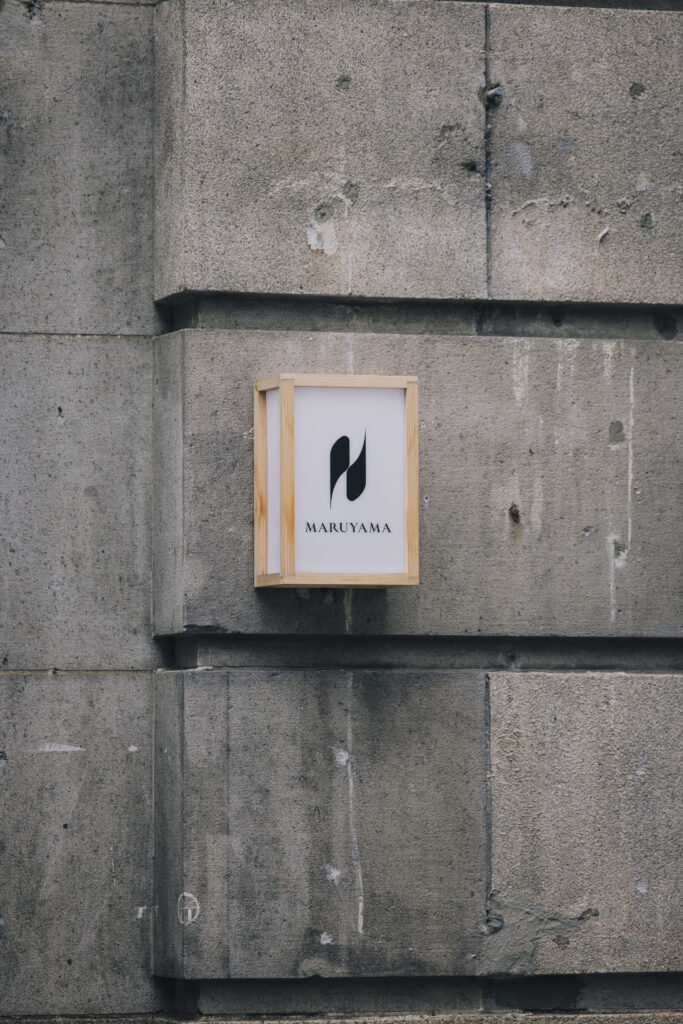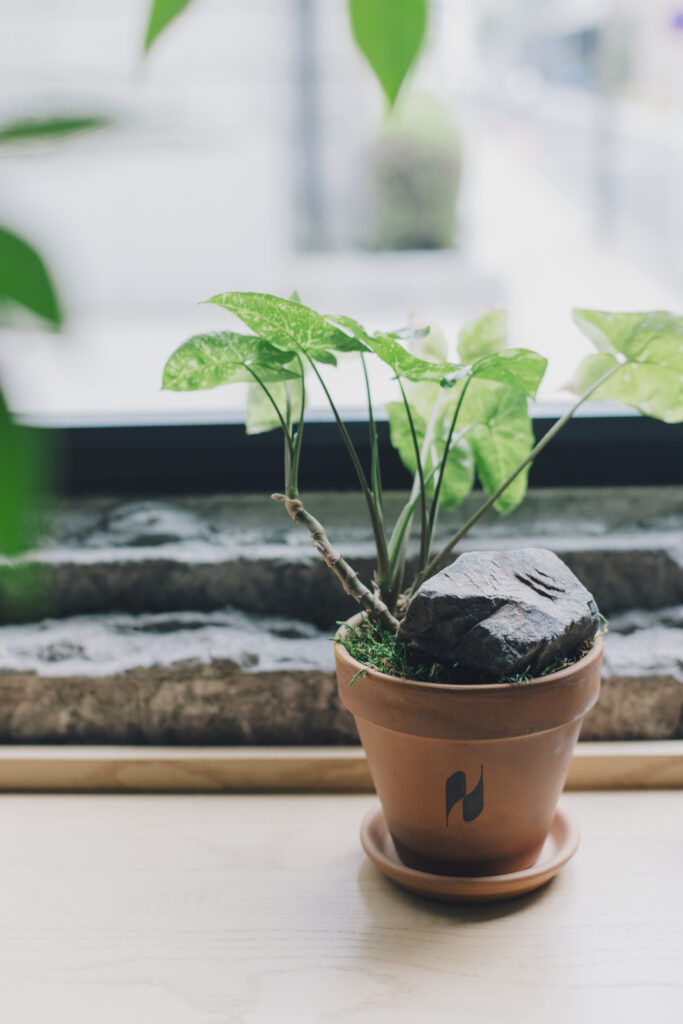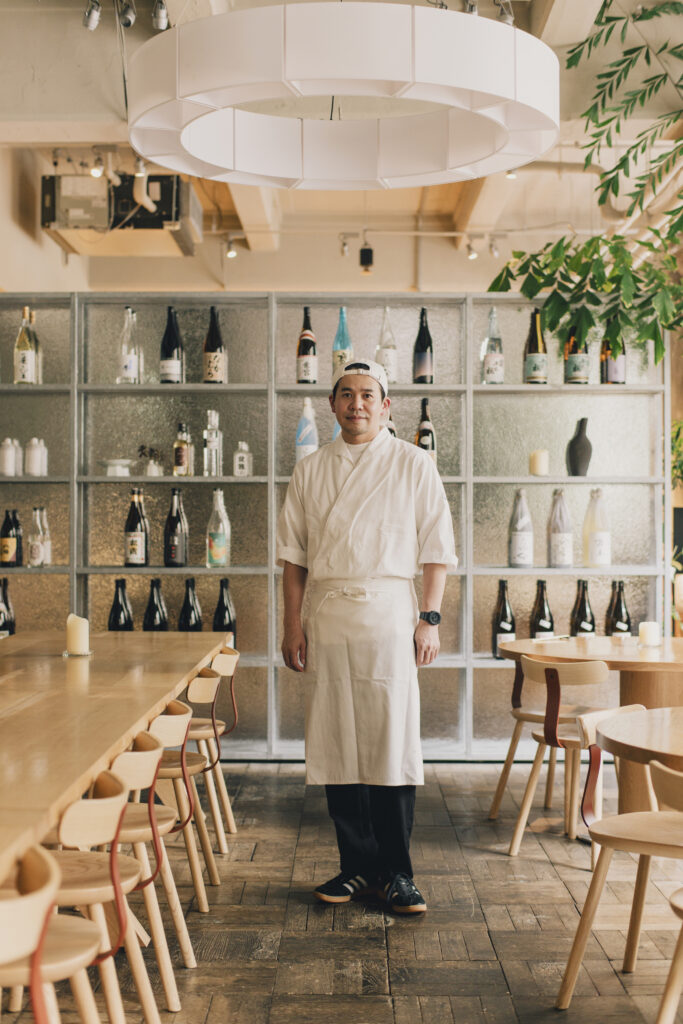


Quality food, sake, and service.
A lively, warm place to relax.
●Where are you from, and what was your childhood like growing up?
I was born and raised in Azumino City, Nagano Prefecture. I went to high school in the neighboring city of Matsumoto, before moving to Saitama for university. When I was in elementary school, I was fond of science thanks to my homeroom teacher. I liked astronomy and experiments too, and I even have memories of observing the starry sky for my free research during summer vacation. I think it was my interest in science that led me to major in chemistry at university.
Of course, I also liked playing the Super Nintendo, or with mini 4WD toys, plastic models, insects, and other stuff that typical boys are in to. My father loved golf, and we sometimes drilled holes in the yard to practice putting together!
Even as a child, I enjoyed being put in charge of the store, getting money from neighbors who came to buy stamps, and handing over goods.
●Can you tell us a bit more about your family?
I have an older sister, and in addition to my father and mother, my grandfather and grandmother also lived with us, so we had a rather large family. Azumino is a land of rich nature, and our house was located on the edge of the village. There was only one post office right in the center of the village, and I would help my family out by selling stamps, so people came to visit us often. Even as a child, I enjoyed being put in charge of the store, getting money from neighbors who came to buy stamps, and handing over goods. There was something about that process that tickled my business spirit, and I think it was somewhat similar to my current job.
My father worked in a department store, selling kimonos and jewelry, and my grandfather and grandmother used to run a tailor shop in town called “Maruyama Clothing Store,” and they had a magnificent sewing machine at home. One day, my grandfather decided to close the store and started working part-time at a soba noodle shop. He was retired, so he was in his 50s or 60s at the time. He was so cool, and he left a lasting impression on me. My family would go to the soba shop to eat sometimes.
My mother’s side of the family was also self-employed, running a company that made lenses, and my maternal grandfather, who passed away, was also a good cook. When relatives would get together, my grandmother would entertain people out front, and the men, led by my grandfather, would take over the kitchen and cook. So I thought to myself, “It’s nice that men can cook.”
●I guess the idea of a man who can cook was instilled in you at that time. Are there any memorable experiences or experiences with food you can remember from that time?
In Nagano, there’s a culture of eating locusts. Sometimes I would go with my grandmother to catch them and have them made into tsukudani (boiled in soy sauce). It’s a taste of the past that I haven’t experienced anywhere else. My sister didn’t like it! Another thing I remember is the German potatoes my mother used to make for me on Sunday mornings. It was just baked potatoes covered with ketchup and cheese, but it was a Western-style dish that I rarely had in my daily life, so I looked forward to it every once in a while.
Four years passed without looking for a job, and when I thought about what to do next, I had this idea that I wanted to turn my love of cooking into some kind of career.
●Can you tell us about your hobbies and club activities during your school days? Was there anything you were really in to?
I played volleyball for all six years of junior high and high school, and for one year after entering university. I was really into it, especially in junior high and high school, and I never missed a single game. On the other hand, I was also interested in clothes and music. I would save my lunch money to go shopping in Tokyo with my sister and girlfriend. Those were the days of ‘ura-juku’ (the back streets of Harajuku), and we would hunt out the latest Nike Air Max shoes.
When I entered college, I wanted to play in a band and started hanging out with friends in the music scene. I had a yearning for a ska band that included trumpets and other brass instruments, so we formed a band of eight members, and I would play the trombone. Some of the members were from the music academy, so they taught me a lot of things. I also joined a ballet club, but it was much more serious than I had expected, so I quit after one year.
I got my first part-time job at an Izakaya near my university in Saitama, because I thought it would be a good balance with being in a band. It was the first place I noticed in front of the station, and it was open until 5:00 a.m., so I thought it would be a good way to earn money. It was a private franchise restaurant with many original menu items, and this is where I learned the basics of kitchen work. Many of the people at the Izakaya where I worked were former delinquents, and I was a little scared at first, but once I got to know them, they took good care of me, teaching me how to prepare food during my shift and even going out with me to buy knives for my own use.
●Sounds like fun! So that’s how you came to pursue your culinary career?
That’s right. I majored in chemistry at university, and I barely managed to get by with my weekly lab experiments and reports, so I barely passed. I was such a lazy student that I don’t even remember what I wrote for my graduation thesis. Four years passed without looking for a job, and when I thought about what to do next, I had this idea that I wanted to turn my love of cooking into some kind of career.
But to do that, I needed to study cooking seriously. So, after graduating from university, I studied at a culinary school for a year. In the culinary industry, having a college degree means you start late, but that’s why my teachers were very supportive. After graduating, I was introduced to a French restaurant in Gaienmae, where I started working. It was a small restaurant with about 20 seats, not a high-end restaurant, but it was a proper place run by a chef who had trained in France.
I learned that even simple ingredients like potatoes and onions could be transformed into something truly impressive.
●How were your days training at the restaurant?
It was very tough. The kitchen was almost completely closed off, with an atmosphere that said, “Young chefs aren’t allowed to face the customers.” We had to wear our chef hats perfectly cylindrical and were rigorously trained. However, the cooking was truly skilful, and I gained a lot of respect for it. I learned that even simple ingredients like potatoes and onions could be transformed into something truly impressive. French cuisine has a strong image of being flashy and high-end, but there’s also the idea that even with simple, local ingredients, you can create something delicious with the right technique. I ended up staying for three years.
Once, a couple who lived next door and were good friends of mine came to the restaurant for their anniversary. Normally, chefs do not appear in front of the public, but on that occasion, they said, “It’s OK for you to come out into the dining area.” So I brought the appetizer I had made, and they were really happy and said it was delicious. That was the first time I heard a customer’s genuine reaction, and it made me very happy. But in the end, we had a fight and I quit the restaurant. But it’s all ok now, we’re friends again.
Although I had previously spent most of my time in the kitchen, I found it fascinating to step out into the world, gain experience in various settings, and connect with people through cooking.
●What were your days like after you left the first restaurant?
My first job was quite challenging, so I started working at a casual café bistro in Nakameguro. Soon after, I was entrusted with the role of head chef. The restaurant was part of a company that operated several cafés, so it wasn’t a formal place, and my friends could easily pop in. I enjoyed proposing new ideas and seeing how customers reacted. Once, a salad I created was well-received, and they decided to serve it at other locations. And that was the first time in my life I was sent on a business trip!
From there, I was given the opportunity to take charge of the kitchen at a café attached to a record shop in Harajuku that I frequently visited. I had been a regular customer there, and since the shop hosted monthly club events, the owner suggested, “Why don’t you try serving your favorite dishes there?” As time went on, I began receiving more requests to cater for art exhibitions and create wedding cakes, working as a freelance chef. Although I had previously spent most of my time in the kitchen, I found it fascinating to step out into the world, gain experience in various settings, and connect with people through cooking. At the time, chefs weren’t really in the spotlight, so it felt fresh and new.
Rather than a place for special occasions, I wanted to create a French restaurant with a casual atmosphere where my friends and neighbors could easily drop in.
●And that’s how you came to own your own shop?
Yes. Through various experiences, I realized that I wanted to be a French chef. So, in 2010, I started my own business, MAISON CINQUANTECINQ. After doing café cuisine, I thought I would return to French cuisine. At first, I was helping out at a restaurant owned by a friend, but when the owner decided to close the place, I took it over. From there, I gradually worked on it myself, step by step, to turn my vision for the ideal restaurant into reality.
●What kind of restaurant did you want to create?
Rather than a place for special occasions, I wanted to create a French restaurant with a casual atmosphere where my friends and neighbors could easily drop in. I envisioned a deli like those found on the streets of Paris, where bread is baked and prepared dishes are sold on the first floor. That said, I had never actually been to France at the time. Fortunately, there are many food lovers in Yoyogi-Uehara, and I quickly felt that they liked the place.
After starting CINQUANTECINQ, I traveled to France to check my theory, and I was delighted to find that everything I had imagined in my ideal world was exactly as I had hoped. At the time, dishes like ratatouille and carrot salad were still relatively unknown in Japan, with many people asking, “What kind of dish is that?” However, in France, the restaurants I admired already had natural wine on the menu, which inspired me to seek out a sommelier who could pair such wines with the dishes. Since then, I have been visiting France every year, using Paris as a base and exploring cities like London and Copenhagen to gain new inspiration.
I began to reflect on what it means to be a Japanese chef, and I started wondering, “Are Izakayas and bistros actually the same thing?”
●And now there are many stores that you are involved in, mainly in Yoyogi Uehara, right?
As I worked on bringing my ideas to life, the number of projects gradually grew. While living in France, I began to reflect on what it means to be a Japanese chef, and I started wondering, “Are Izakayas and bistros actually the same thing?” Both offer delicious food, drinks, and lively, warm service. That’s when I decided to start “LANTERNE,” an Izakaya. Now, we’ve expanded to include a second location, as well as “La Pita de maison cinquantecinq,” which serves Middle Eastern and Mediterranean-inspired dishes like falafel and hummus in pita bread, and “AELU,” a tableware gallery. Our business has diversified into various formats.
●And it was during that time that you opened MARUYAMA, wasn’t it? What kind of image did you have of Kabutocho at the time?
I was friends with the members of “caveman,” which was originally located here, and I had visited the restaurant several times. Also, I consulted with chef Kyohei Nishi when he launched “Neki”. Since I wasn’t very familiar with the Kabutocho area, I wasn’t sure what to expect, but since opening, I’ve seen a lot of people gather here and the area has started to grow as a neighborhood, which I find very appealing. That’s when I was approached with the idea of opening a store here. We’ve been operating in the Shibuya and Setagaya suburbs for a long time, but we thought it would be nice to start a new store in an area where people don’t know us yet, so we decided to open “MARUYAMA.”
In the heart of Tokyo, which attracts many international visitors, I wanted to share the charm of the “Izakaya”—the place where I started—with the world. Moreover, I wanted to nurture it into a brand that I could continue to be involved with for many years to come.
●What was your intention in naming the restaurant after yourself?
In the heart of Tokyo, which attracts many international visitors, I wanted to share the charm of the “Izakaya”—the place where I started—with the world. Moreover, I wanted to nurture it into a brand that I could continue to be involved with for many years to come. As an expression of that strong determination, I decided to name it after myself. I even thought that if I were to open a restaurant overseas, I would use this name.
The cuisine is typical of an Izakaya, blending Japanese and Asian dishes with French elements for a wide variety of flavors. The common thread is that everything pairs well with alcohol. We want guests to enjoy Japanese spirits like shochu and sake, so we not only offer a wide selection but also collaborate with breweries to create custom flavors. To attract families, we’ve developed non-alcoholic drinks like carrot and chamomile-infused beverages and ginger ale with ginger, chilli, and Sichuan pepper. However, all of these are designed to pair well with shochu and can be mixed with it.
●What’s your impression of Kabutocho after opening the restaurant?
I didn’t see many people in suits in the area so far, but in Kabutocho, workers from the neighborhood come to visit us, and it’s a lot of fun. At first, I was a little nervous, wondering if they would accept me. But now we have a mix of workers, tourists from overseas, and foodies. I’m very happy because I believe that this is the way an Izakaya should be. The mix of races, ages, and genders gives the place a groove. When I see salarymen smiling and saying, “I’m full and drunk!” as they leave, I think, “Bravo!”. That’s what Izakayas are all about, getting people drunk!
In the future, we plan to expand our standing bar space so that customers can drop in quickly, and we are also planning events featuring sake breweries and tableware. We want to design a space with a lot of energy and density.
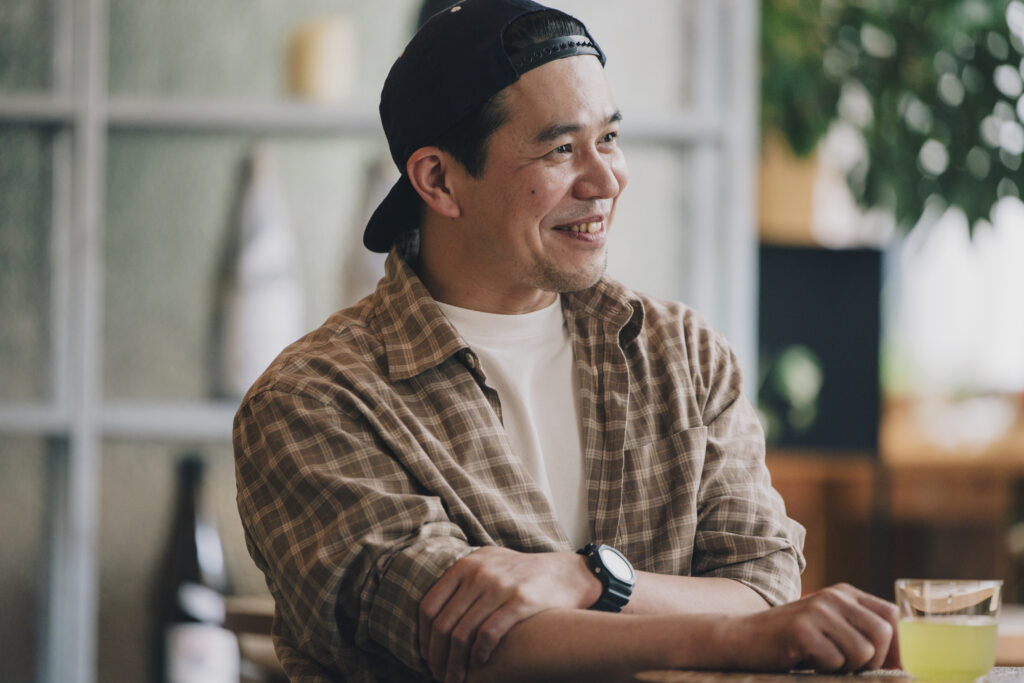
丸山智博
Chihiro Maruyama
Born in Azumino City, Nagano Prefecture. After graduating from university, he decided to pursue a career in cooking and worked at a French restaurant. He later served as a chef at bistros and cafes in Tokyo, and in 2010, he established his own business. He has opened various types of restaurants, including “MAISON CINQUANTECINQ,” “LANTERNE,” “La Pita de maison cinquantecinq,” “LANTERNE hanare,” and “AELU,” primarily centered around Yoyogi-Uehara. In March 2025, he opened his first Izakaya, “MARUYAMA,” in Kabutocho. In June of the same year, he published his first book, “My Favorite Tableware, My Favorite Dishes” (TAKARAJIMASHA Inc.).
Interview&Text : Misaki Yamashita
Photo : Masahiro Shimazaki
Chihiro Maruyama
Owner Chef
Interesting people in Kabutocho
With respect to the chef who brought a French breeze to Kabutocho, where Western cuisine was unheard of at the time. NEKI really nails the balance between classic and gastronomic cuisine. The background music selected by Nishi is also nice. Lately, whenever we meet, we end up talking more about cameras than food!
